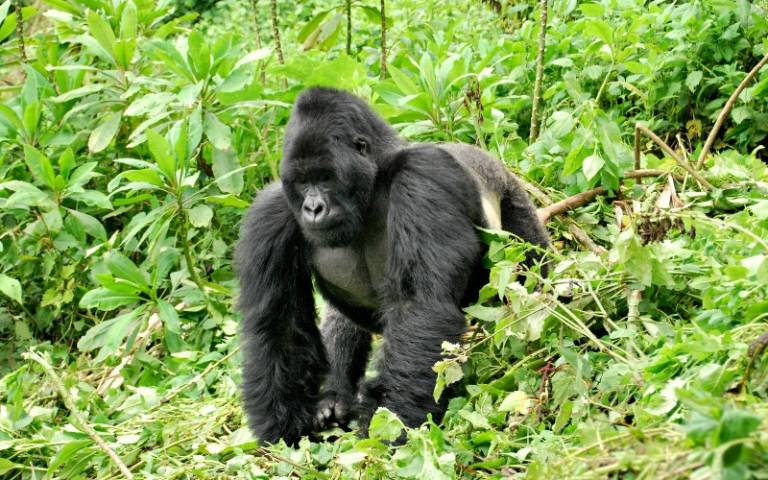Mediterranean and tropical biodiversity most vulnerable to human pressures
14 September 2020
Animals in tropical and Mediterranean areas are the most sensitive to climate change and land use pressures, finds a new study by UCL researchers.

The findings, published today in Nature Ecology & Evolution, show how extinction risks are not evenly distributed worldwide, and suggest that large declines in tropical biodiversity are likely to occur imminently.
Lead author Dr Tim Newbold (UCL Centre for Biodiversity & Environment Research) said: “Tropical areas are expected to see the greatest expansions of agriculture in the coming decades, and are already seeing new temperature extremes.
“Coupled with the fact that data on biodiversity are often biased towards more temperate regions, our findings suggest that global biodiversity declines may be even worse than leading experts are predicting. Urgent action is needed to prevent biodiversity losses and extinctions, particularly in tropical and Mediterranean areas which have some of the most diverse ecological communities on the planet.”
The research team analysed data on 47,044 species of animals, plants and fungi at thousands of sites in 91 countries to measure the number of different species living in more disturbed environments such as cities and intensive agricultural areas, or in moderately disturbed or wild spaces. The team also compared data on where species are able to survive against regional climate modelling data to predict responses to climate change.
The researchers found substantially lower biodiversity in more disturbed environments, especially in Mediterranean and tropical regions. They also found that among vertebrates, those most sensitive to climate warming are found in tropical forests, tropical grasslands and Mediterranean areas. Species of concern include the eastern gorilla, critically endangered due to habitat loss and climate change in the African tropics, and Hermann’s tortoise, a Mediterranean animal currently threatened by habitat loss and likely climate change as well in years to come.
Across species in tropical regions, the researchers projected local declines of 10 to 13% in the number of species for each degree of climate warming.
Species in areas with less pronounced seasonal changes, particularly in the tropics, were found to be the most vulnerable to climate change. The researchers note that plants and animals that have not adapted to wide ranges of temperatures across seasons are more likely to suffer if temperatures rise. In tropical and Mediterranean regions, many species were found to be already living near the upper temperature limit that they can tolerate.
One partial explanation for the findings is that some other biomes (communities of plants and animals occupying a particular habitat) have been heavily influenced by humans for centuries, indicating that the most sensitive species are likely to have already been wiped out.
While not tested in the study, the researchers say that tropical species may also be more vulnerable due to smaller range sizes and high concentrations of specialist species, as well as those that mature more slowly and produce fewer offspring.
Dr Newbold said: “We found that areas facing the greatest biodiversity threats from climate change and land use were often the same areas, which is even more concerning as these two pressures can interact to make environments even more inhospitable. For example, heavily modified landscapes often have less canopy cover which would otherwise moderate extreme temperatures.”
Dr Newbold is also a co-author of the World Wildlife Fund’s Living Planet Report, published this month, which showed that biodiversity has declined most in the tropics since 1970.* He and colleagues argue that coordinated global efforts are needed to turn the tide of biodiversity loss.
“Conservation efforts alone will not be enough to save endangered and vulnerable animals and plants. Governments, private companies and consumers will all need to act now to curb climate change and to mitigate land use pressures that destroy habitats,” he said.
Dr Newbold and his study co-authors, UCL master’s student Philippa Oppenheimer and PhD candidates Adrienne Etard and Jessica Williams, were supported by the Royal Society, the Natural Environment Research Council and the Leverhulme Trust.
Links
- Research paper in Nature Ecology & Evolution
- Dr Tim Newbold’s academic profile
- UCL Centre for Biodiversity & Environment Research
- Courses available at the Centre for Biodiversity & Environment Research
- UCL Biosciences
- * The Living Planet Report 2020
Image
- Eastern gorilla in Rwanda. Credit: Carine06 on Flickr (CC BY-SA 2.0)
Media contact
Chris Lane
Tel: +44 (0)20 7679 9222
Email: chris.lane [at] ucl.ac.uk
 Close
Close

